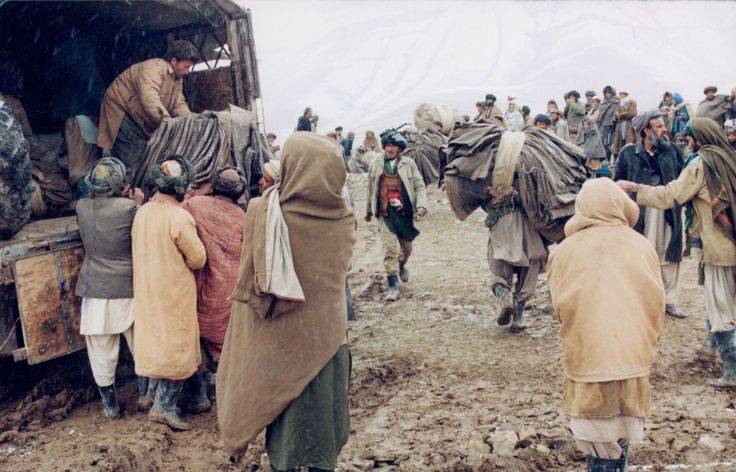deeper despair. According to early reports, more than 800 people have lost their lives, while thousands remain injured, many trapped under collapsed structures. The tremors were so powerful that they rippled beyond Afghanistan’s borders, rattling buildings as far away as Pakistan’s Islamabad and even parts of northern India.
This earthquake, described by regional seismologists as one of the most severe to hit Afghanistan in decades, struck at a shallow depth, magnifying its destructive impact. As rescuers scramble to extract survivors from the wreckage of mud-brick houses, schools, and marketplaces, the death toll is predicted to increase.
The Moment the Earth Shook
Residents in Kabul recounted scenes of chaos as the tremors jolted them from sleep. “The walls cracked, and my children screamed. We rushed into the street, but everything was shaking,” said Abdul Rahman, a shopkeeper in Kabul, describing the terrifying moments when the quake struck.
In neighboring Pakistan, tremors were felt across major cities, including Islamabad, Peshawar, and Rawalpindi. People hurried outside, emergency services were inundated with calls, and high-rise residences trembled. Fortunately, Pakistan reported no major casualties, though minor structural damages were observed in parts of Khyber Pakhtunkhwa province.
The quake’s epicenter was located in Afghanistan’s rugged northeastern region, an area prone to seismic activity due to its position along the collision zone of the Indian and Eurasian tectonic plates. Experts noted that the quake’s shallow depth—less than 20 kilometers—made it particularly destructive, with shockwaves spreading rapidly through densely populated areas.
Villages Flattened, Families Torn Apart
The provinces closest to the epicenter, including as Baghlan, Takhar, and Badakhshan, were said to have suffered the worst destruction. In these regions, traditional mud-brick houses collapsed instantly, leaving families buried under heavy debris. Eyewitnesses described heartbreaking scenes of parents digging with bare hands to rescue children, and communities using shovels, sticks, and even kitchen utensils to search for survivors.
“Almost my entire village is gone. In one night, we lost friends, neighbors, and family members,” Mariam, a Baghlan province native, stated. “There are no physicians or large machinery in our area. We are doing everything on our own.
Hospitals, already stretched thin due to years of conflict and underfunding, are overwhelmed. Buildings are in risk of collapsing, so medical personnel are treating patients in courtyards and temporary tents. Scarcity of blood, medicines, and surgical equipment has worsened the crisis. Doctors Without Borders (MSF) and the International Red Cross have begun mobilizing aid, but reaching remote areas remains a challenge.
A Country Already in Crisis
For Afghanistan, the earthquake adds yet another layer of suffering to a nation long battered by war, political instability, and economic collapse. Since the Taliban takeover in 2021, Afghanistan has faced sanctions, limited international recognition, and a shrinking humanitarian space. More than half of the country’s population already lives below the poverty line, with food insecurity at record highs.
Infrastructure weaknesses amplified the impact of the quake. Rural villages, often constructed with unreinforced mud bricks and lacking earthquake-resistant designs, crumbled within seconds. Rescue attempts are slowed when landslides block or damage roads that go to isolated places. Communication networks have also been disrupted, making it difficult to assess the full extent of damage.
Regional Tremors and Reactions
The tremors extended beyond Afghanistan, serving as a stark reminder of the region’s vulnerability to seismic disasters. In Pakistan, schools and offices were evacuated as precautionary measures, while emergency agencies remained on high alert. India’s northern states, including Jammu & Kashmir and Himachal Pradesh, also reported minor tremors, though no significant damage was recorded.
Governments across South Asia expressed condolences. Pakistan’s Prime Minister issued a statement pledging “all possible support to our Afghan brothers and sisters in this hour of grief.” India’s External Affairs Ministry also extended sympathies and indicated readiness to provide assistance if requested.
Iran Extends a Helping Hand
One of the earliest offers of international assistance came from neighboring Iran. Iranian officials confirmed they were ready to send humanitarian aid, including rescue teams, food supplies, tents, and medical equipment, to Afghanistan.
“The people of Afghanistan have endured a terrible tragedy,” said Nasser Kanaani, spokesman for Iran’s Foreign Ministry, in an expression of support. As neighbors and brothers, we stand with them in their grief. Iran is ready to offer relief and humanitarian assistance right away.
Iranian Red Crescent Society teams have reportedly been placed on standby, awaiting coordination with Afghan authorities to cross the border. This gesture of goodwill highlights the importance of regional cooperation in times of crisis, especially when Afghanistan faces diplomatic isolation from much of the global community.
The Global Humanitarian Response
The United Nations Office for the Coordination of Humanitarian Affairs (OCHA) has activated emergency response mechanisms, dispatching assessment teams and preparing relief supplies. UN Secretary-General António Guterres urged the international community to step forward: “Afghanistan is enduring immense suffering. We call upon all nations and organizations to extend urgent aid to save lives and help rebuild.”
International NGOs including Save the Children, World Food Programme (WFP), and CARE International have also mobilized resources. However, Afghanistan’s challenging geography and complex political landscape present logistical obstacles for aid organizations. Cross-border aid, such as that offered by Iran, is becoming more and more necessary.
Survivors Speak: Stories from the Ground
The human toll of the disaster is best captured through the voices of survivors. In Takhar province, 14-year-old Farid described how he was pulled from the rubble of his collapsed home by neighbors: “I could hear my sister crying, but we couldn’t reach her. She is gone now. Everything we had is gone.”
In Badakhshan, a local teacher, Zainab, stood near the ruins of her collapsed school. “We lost half our students. The children had dreams, but the earth swallowed them. We cannot even bury everyone properly; there are too many bodies.”
These accounts demonstrate not just the scope of the catastrophe but also the tenacity of common Afghans who persist in digging, searching, and rebuilding in the face of tremendous loss.
Challenges Ahead
While immediate priorities include rescue operations, medical treatment, and shelter, long-term recovery will be far more daunting. Experts warn that without sustained international aid, Afghanistan could face a humanitarian catastrophe. Winter is approaching, and thousands of families now lack safe shelter.
Waterborne diseases like cholera, already a concern in the region, could spread rapidly if clean water and sanitation facilities are not restored quickly. Children and the elderly remain the most vulnerable in such crises.
Reconstruction will require significant investment, particularly in housing, healthcare, and infrastructure. But with Afghanistan’s limited financial resources and restricted access to global funds, recovery is likely to be slow and uneven.
Learning from the Past
Afghanistan has experienced devastating earthquakes before. Over 4,000 people were killed by twin earthquakes in Takhar province in 1998. In 2015, a powerful quake in Badakhshan killed more than 300. Despite this history, preparedness and disaster response infrastructure remain minimal.
Experts argue that Afghanistan—and the wider South Asian region—needs stronger earthquake-resilient building codes, early warning systems, and coordinated emergency response plans. The latest tragedy underscores the urgency of investing in resilience to protect vulnerable populations.
A Call for Global Solidarity
As Afghanistan reels from this disaster, global solidarity becomes not just a moral duty but a humanitarian necessity. The country’s political complexities should not overshadow the plight of ordinary citizens who are bearing the brunt of both man-made and natural disasters.
Regional neighbors like Iran have already shown leadership by extending humanitarian aid. Broader international engagement, however, is needed to ensure timely relief and long-term recovery. Beyond immediate assistance, the international community must also support Afghanistan in strengthening disaster preparedness to prevent future tragedies of such scale.
Tremors Beyond Borders
The earthquake that shook Afghanistan has left behind more than shattered buildings—it has torn families apart, deepened humanitarian challenges, and reminded the world of the fragility of human life in disaster-prone regions. From Kabul to Islamabad, the tremors were felt, but their impact is heaviest in Afghan villages now buried under rubble.
As rescue teams race against time, and as neighbors like Iran extend helping hands, the tragedy also presents an opportunity: an opportunity for nations to rise above politics and show compassion. For Afghanistan’s survivors, every hour matters, every act of solidarity counts, and every gesture of humanity could mean the difference between despair and hope.
Related News: Read More




Pingback: Mamata Slams Army Over Removal of TMC Stage in Kolkata